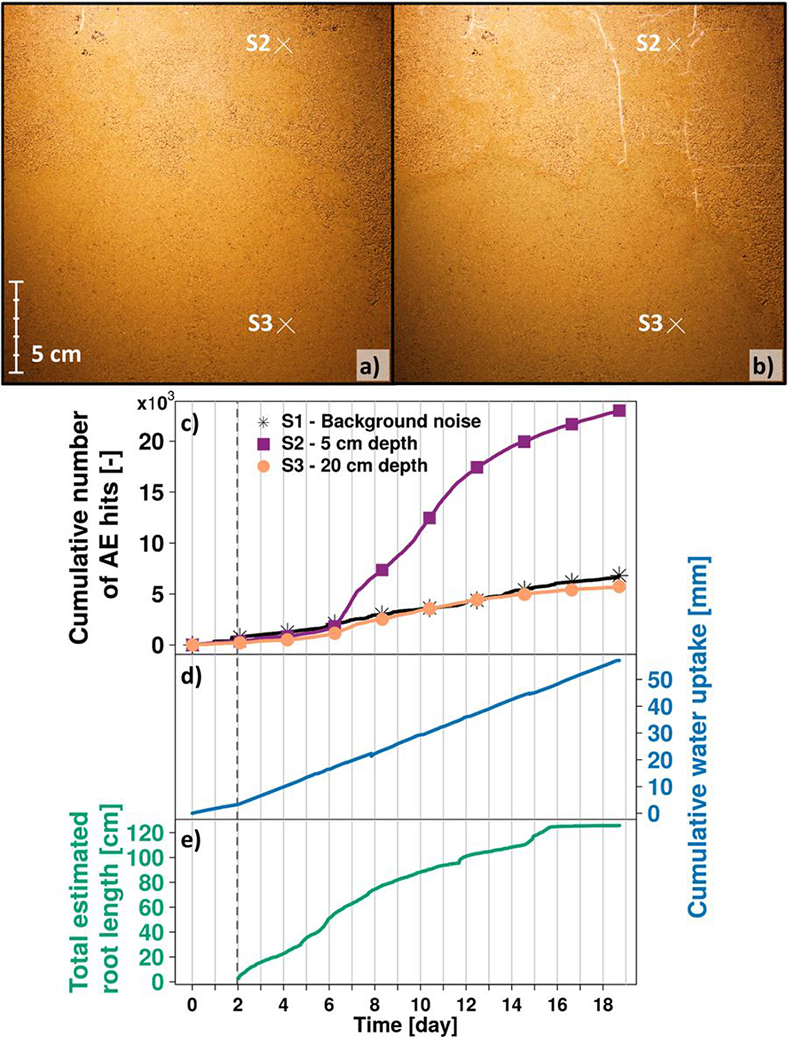
Time-lapse images recorded root-growth visually (a,b), which gave the estimated total root length, while two sensors registered acoustic emissions (c). (Graphic: Marine Lacoste, Scientific Reports, CC BY 4.0)
To test this hypothesis, the researchers compared visual observations with acoustic measurements. They demonstrated that in a sandy soil- filled glass cells with corn plants and in similar cells filled with loamy soil allowing earthworms to burrow tunnels.
Piezoelectric sensors registered the acoustic emissions, which take the form of elastic waves at a frequency of 1-100 kilohertz. Sound waves of this nature occur, for example, when small grains move or rub against each other – or when tiny cracks form in the soil. Humans cannot hear them.
After seven days (earthworm) and nineteen days (roots), the researchers correlated the observed root growth and burrowed tunnels with the recorded noises – they were highly consistent. Control measurements from cells containing only soil confirmed that the sounds originated from roots and earthworm activity.
When do roots grow – and how many?
Dani Or has already successfully investigated terrain for early signs of landslides. The work taught him to distinguish and interpret a range of acoustic emissions. He says: “The noises in the soil are of a very low magnitude, but the fact that they exhibit specific signatures means they can be attributed to specific sources. Worms, for instance, move much faster than roots, while their acoustic emissions are much more irregular.”
He hopes that the new method will at some point enable him to make quantitative assessments as to the number of root tips growing simultaneously and the speed of their growth. Not least, the method could shed light on the interaction of earthworms and root growth and the formation of soil structures.
Next step: field trial
The study has allowed the researchers to demonstrate that soil biological activity can be measured acoustically – under laboratory conditions, at least. The next step involves looking at the situations that suit the method and how it plays out in the field. A preliminary test has already proved successful: the researchers let plants grow in an soil column – which allowed them to measure root growth acoustically. Or can well see his method being used by farmers in the future alongside other means of soil analysis.